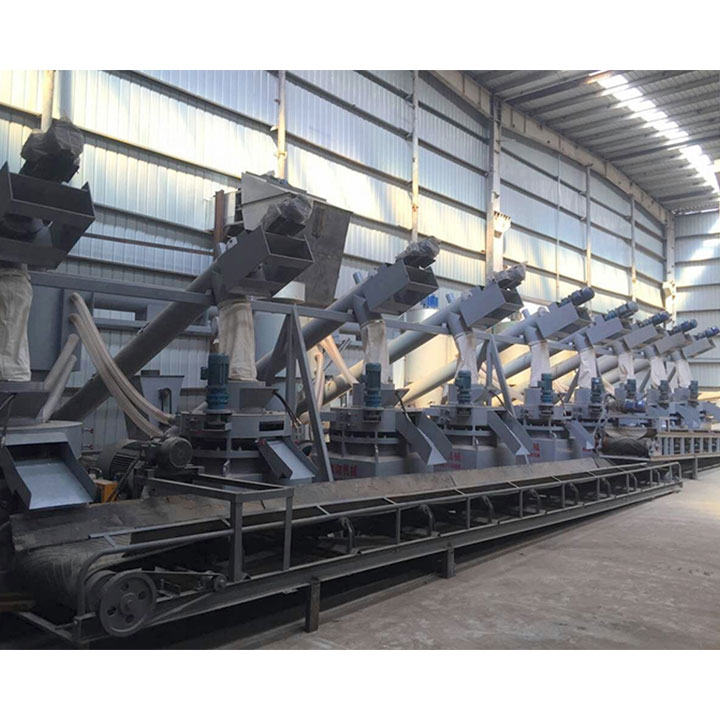The Power of Biomass Pellet Machines: A Sustainable Solution for Energy Production
2025-01-21
As the world continues to seek renewable energy sources, the role of biomass energy has gained significant attention. Biomass pellet machines are at the forefront of this movement, providing an efficient and sustainable method for converting organic materials into clean, renewable energy. But what exactly is a biomass pellet machine, how does it work, and why is it important? This blog will explore the many benefits of biomass pellet machines, their applications, and how they are shaping the future of energy production.
What Is a Biomass Pellet Machine?
A biomass pellet machine is a piece of equipment designed to convert organic waste materials, such as wood chips, sawdust, agricultural residue, and even food waste, into small, uniform pellets. These pellets can then be used as a form of renewable energy, replacing traditional fossil fuels like coal and natural gas. The machine works by compressing and compacting these materials into dense, cylindrical pellets, which are easy to store, transport, and burn for energy production.
Biomass pellet machines operate under high pressure and heat, which helps to bind the organic matter together without the need for additional chemicals or binders. The resulting biomass pellets are highly energy-efficient and environmentally friendly, making them an excellent alternative to conventional fuels.
How Does a Biomass Pellet Machine Work?
The basic operation of a biomass pellet machine involves several key steps:
1. Material Preparation: Biomass materials, such as wood chips, sawdust, and agricultural residues, are first gathered and prepared for processing. In many cases, the material may need to be shredded or ground into smaller pieces for easier handling and better pelletization.
2. Drying: Biomass materials typically contain moisture, which can interfere with the pelletization process. Therefore, a drying process is often necessary to reduce the moisture content to around 10-15%. This ensures that the pellets will burn efficiently without producing excessive smoke.
3. Pelletizing: The prepared and dried biomass is then fed into the pellet machine, where it is compressed under high pressure and heat. The biomass is forced through a die, which shapes it into small cylindrical pellets. These pellets are then cut into uniform lengths by a pellet cutter.
4. Cooling and Packaging: After pelletizing, the pellets are still hot and need to be cooled down to prevent them from breaking apart. Once cooled, the pellets are packaged for storage and transportation. The final product is a compact, dense pellet that can be used for heating, electricity generation, or as animal feed.
Key Benefits of Biomass Pellet Machines
1. Renewable Energy Source
One of the biggest advantages of biomass pellets is that they are made from renewable, organic materials. Unlike fossil fuels, which take millions of years to form, biomass resources can be replenished annually through sustainable farming and forestry practices. Biomass pellet machines help to convert these renewable materials into energy, providing a reliable and eco-friendly alternative to traditional energy sources.
2. Reduces Waste and Promotes Sustainability
Biomass pellet machines also help address the growing problem of waste management. Materials that would otherwise be discarded—such as agricultural residues, forestry by-products, and even urban waste—can be repurposed into valuable energy. This reduces landfill waste and decreases the need for incineration, both of which are harmful to the environment.
3. Lower Carbon Emissions
Biomass energy is considered carbon-neutral because the carbon dioxide released when the pellets are burned is offset by the carbon absorbed by the plants during their growth. This is in stark contrast to fossil fuels, which release large amounts of CO2 and contribute to global warming. By utilizing biomass pellets for energy production, we can significantly reduce greenhouse gas emissions.
4. Cost-Effective Energy Solution
Biomass pellets can be produced locally from readily available materials, making them a cost-effective energy solution. Since the raw materials used for pellet production are often low-cost agricultural waste or forestry residues, the production cost of biomass pellets is relatively low. Additionally, biomass pellet machines themselves are available in a range of sizes and capacities, making them suitable for both small-scale and large-scale operations.
5. Energy Efficiency
Biomass pellets are highly energy-efficient because they are compact and have a high energy density. This means that they release more energy per unit of weight compared to traditional firewood, and they burn more cleanly, producing less ash and smoke. As a result, biomass pellets are an excellent choice for heating homes, industrial facilities, and even generating electricity.
6. Versatile Applications
Biomass pellets have a wide range of applications. Some of the most common uses include:
- Heating: Biomass pellets can be used in pellet stoves, boilers, and furnaces to provide residential and industrial heating. These systems are more efficient than traditional wood-burning stoves and produce less pollution.
- Electricity Generation: Biomass power plants use biomass pellets as fuel to generate electricity. In many cases, biomass is used in combination with other renewable sources like wind or solar to provide reliable, low-carbon electricity.
- Animal Feed: In addition to energy production, biomass pellets are sometimes used as animal feed, particularly in the form of alfalfa or grain-based pellets for livestock.
- Transportation Fuel: In some cases, biomass pellets are converted into biofuels like ethanol or biodiesel, which can be used to power vehicles and machinery.
Applications of Biomass Pellet Machines
Biomass pellet machines are used in a variety of industries, including:
1. Residential Heating: Small-scale pellet stoves and boilers use biomass pellets to heat homes, providing an affordable and eco-friendly alternative to traditional heating methods.
2. Power Generation: Large-scale biomass power plants rely on biomass pellet machines to produce pellets for electricity generation. These plants can either convert the pellets into steam for turbine-driven generators or burn them directly in combustion units.
3. Industrial Heating: Factories and industrial facilities often use biomass pellets for process heating. Pellet boilers are used to supply heat for drying, steaming, and other manufacturing processes.
4. Agriculture: Farmers can use biomass pellet machines to process agricultural waste, such as corn stalks, straw, or rice husks, into pellets for use as animal feed or for energy production.
5. Waste Management: Biomass pellet machines also help waste management companies process organic waste into pellets, reducing the environmental impact of landfills and promoting a circular economy.
Conclusion
Biomass pellet machines represent a significant innovation in the way we produce and consume energy. By transforming organic waste into a high-energy, renewable fuel, these machines contribute to a more sustainable and eco-friendly energy future. Whether used for heating, electricity generation, or even animal feed, biomass pellets offer a clean, reliable alternative to fossil fuels, helping to reduce carbon emissions and promote environmental responsibility.
As the global demand for renewable energy sources continues to grow, biomass pellet machines will play an increasingly important role in helping to meet these needs. With their cost-effectiveness, energy efficiency, and environmental benefits, biomass pellet machines are paving the way for a greener, more sustainable future.



